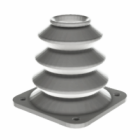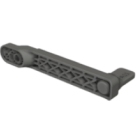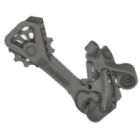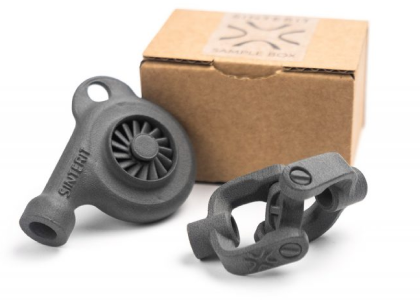3D printing for dental applications
3D printing for dental applications has become a transformative force in clinical and laboratory settings alike. It enables fast, precise, and fully customized solutions for diagnostics, treatment planning, and final restorations. From surgical guides to full dentures, the ability to 3D print teeth, models, and devices has significantly improved workflows for dentists, orthodontists, and dental technicians — while enhancing the patient experience through better fit, function, and speed.
How 3D printing is used in dentistry?
The use of 3D printers in dentistry begins with digital impressions — typically captured using intraoral scanners — which are converted into CAD models. These files are then processed and printed in resin, thermoplastic, or wax-like materials depending on the indication. Whether it’s creating a temporary crown, a bite splint, or an aligner model, the shift from manual to digital fabrication has redefined accuracy, efficiency, and reproducibility in the dental field.
3D printers for dental applications are optimized for small part precision, repeatability, and compatibility with biocompatible materials. This makes them essential tools in modern clinics and labs.
3D printed dental models and crowns
One of the most common uses of 3D printing in restorative dentistry is the creation of 3D printed dental models, which serve as the foundation for various indirect procedures. These models are used for clear aligner thermoforming, crown and bridge planning, and mock-ups for esthetic restorations. Their accuracy makes it easier for dental labs to deliver fast, high-quality results with minimal manual adjustment.
Additionally, 3D printed dental crowns and temporary restorations can be produced chairside or in-lab using resin-based materials. This allows for same-day procedures, improved patient comfort, and reduced reliance on traditional stone models or casting processes.
3D printing for dental implants and surgical guides
In implantology, 3D printing for dental implants plays a crucial role in treatment planning and surgical precision. With the help of CBCT imaging and digital planning software, clinicians can design and print surgical guides that help place implants in the exact angle and depth required — reducing risk and improving outcomes.
While the implant fixtures themselves are still manufactured conventionally or via metal 3D printing, patient-specific 3D printed dental implant models and guide systems allow for faster procedures and better integration between clinician and lab.
Endodontic applications of 3D printing
In endodontics, 3D printing is used to fabricate precise training models of root canal anatomy, surgical guides for apicoectomies, and even temporary crowns. These endodontic applications of 3D printing help dentists reduce chair time and improve treatment accuracy — especially in anatomically complex or previously treated cases. The ability to rehearse procedures or produce custom-fitted guides supports better planning, enhances patient safety, and allows clinicians to preserve more natural tooth structure.
Other dental applications of 3D printing
The versatility of 3D printing dental applications extends to:
- clear aligner workflows, where dozens of 3D print teeth models are created to form the progression of trays,
- custom trays, splints, and night guards, made from durable, biocompatible resins,
- orthodontic retainers, where 3D printing dental retainers provides exact fits and rapid turnaround,
- prosthodontic mock-ups, where the visual and functional result can be previewed before final work begins.
These applications have helped reduce turnaround times from days to hours, while eliminating messy impressions and hand-fabricated errors.
Materials for 3D printed dental solutions
3D printing dental materials are specifically formulated to meet the demands of oral use, including biocompatibility, durability, and sterilizability. SLA and DLP technologies dominate in this space due to their high resolution and surface quality. Materials range from standard model resins to Class IIa certified resins for surgical guides and temporary restorations.
The ongoing development of next-generation materials — such as long-term crown resins, gingiva-colored photopolymers, and flexible splint materials — continues to expand the role of 3D printing in restorative and prosthetic dentistry.
Endodontic applications of 3D printing
In endodontics, 3D printing is used to fabricate precise training models of root canal anatomy, surgical guides for apicoectomies, and even temporary crowns. These endodontic applications of 3D printing help dentists reduce chair time and improve treatment accuracy — especially in anatomically complex or previously treated cases.
Important to know
3D printing in dental applications has moved far beyond experimental status — it’s now a standard part of digital dentistry. Its ability to streamline workflows, personalize treatments, and shorten delivery times is changing the way dental care is provided. Whether you’re looking to 3D print a dental model, fabricate a temporary restoration, or produce a complex surgical guide, additive manufacturing offers a level of control and efficiency that analog methods simply can’t match.
As materials and printer technologies evolve, so will the scope and impact of 3D printing in the dental field — continuing to shape a future where dental care is faster, smarter, and more patient-centered.
Explore also
- 3D printed prototype
- 3D printing in medical industry
- Application of 3D printing in industry
- Application of 3D printing in architecture
- 3D automotive: additive manufacturing in car production
- Aerospace additive manufacturing
- 3D printing in civil engineering
- 3D printing in education
Related categories













